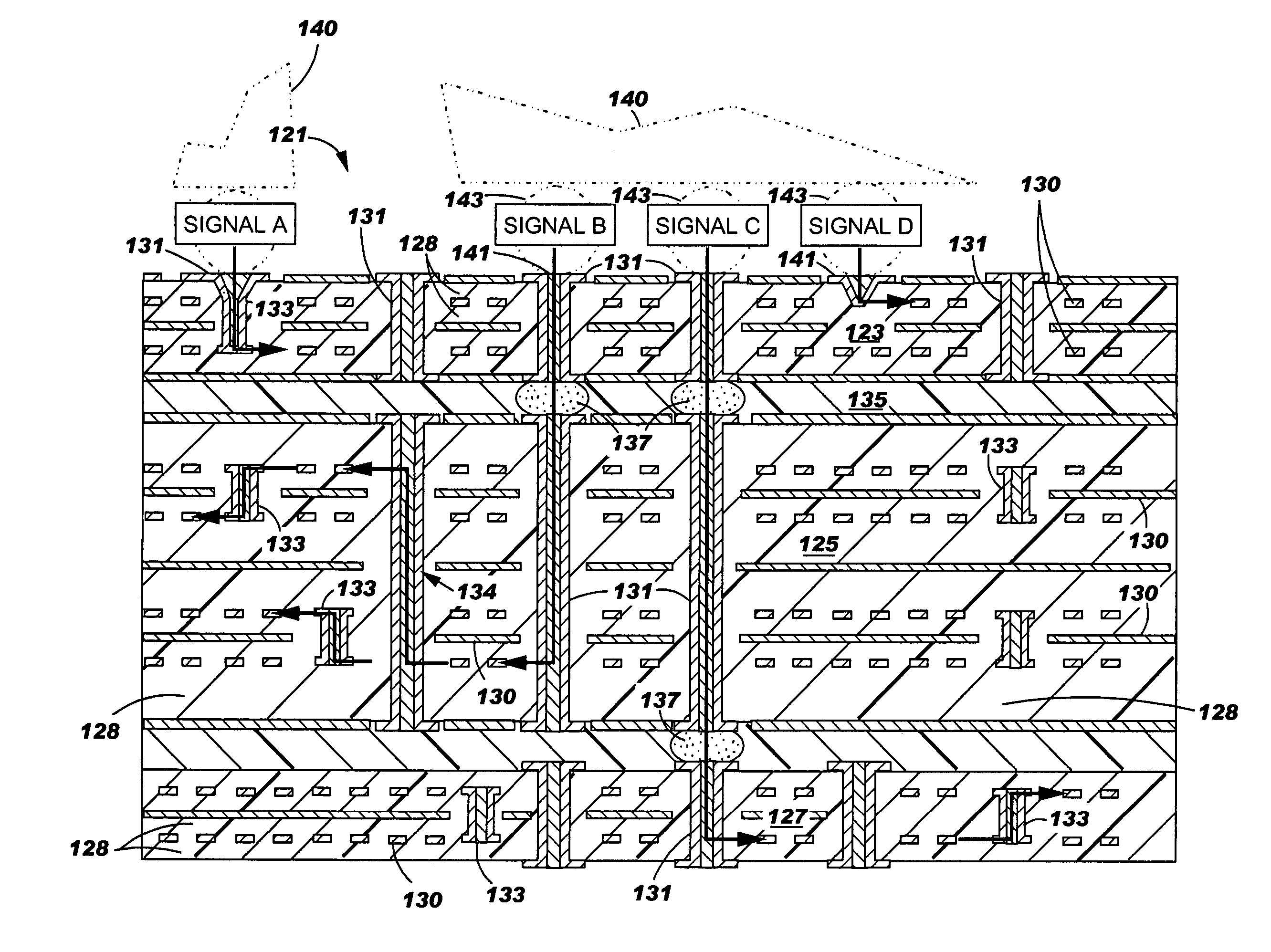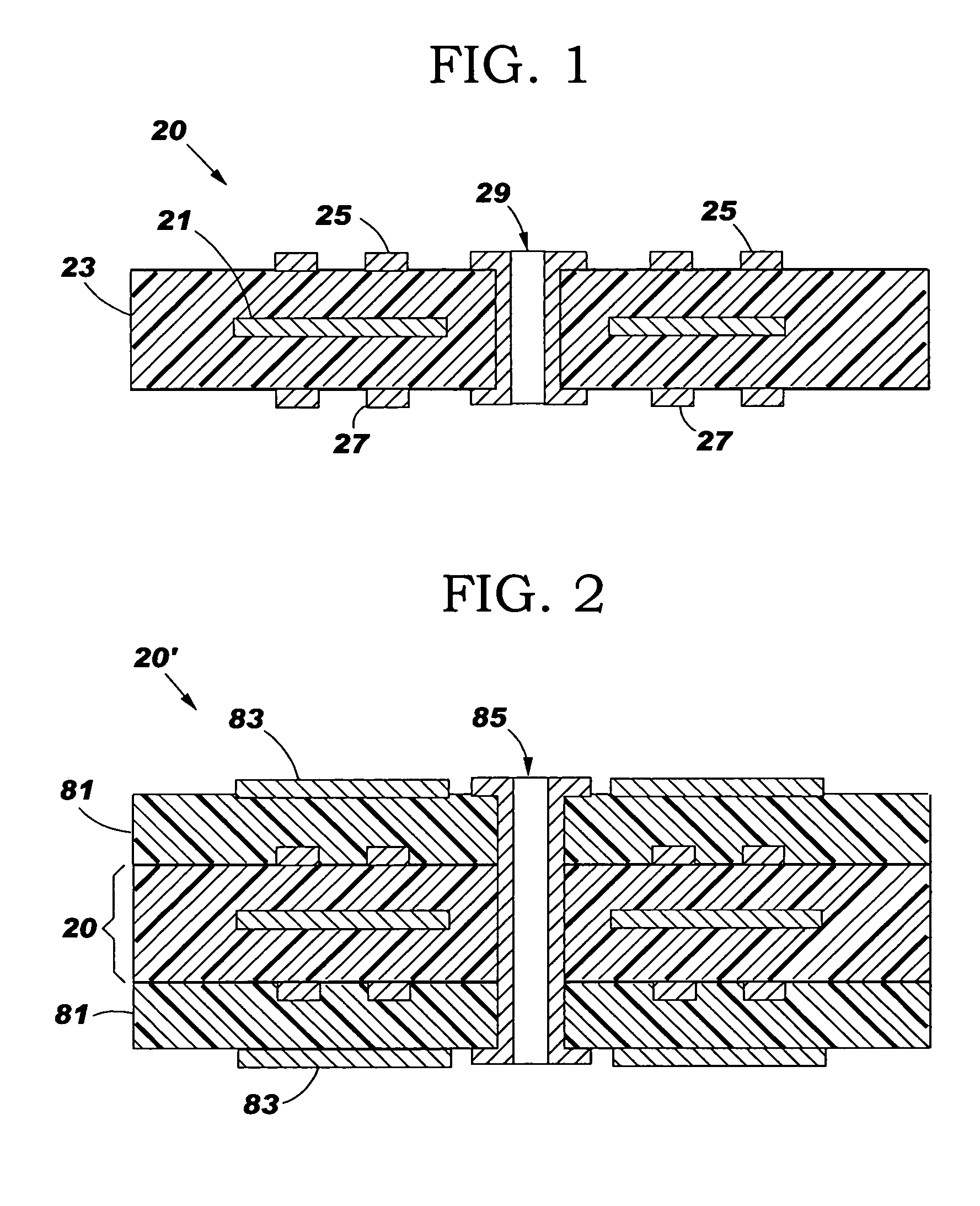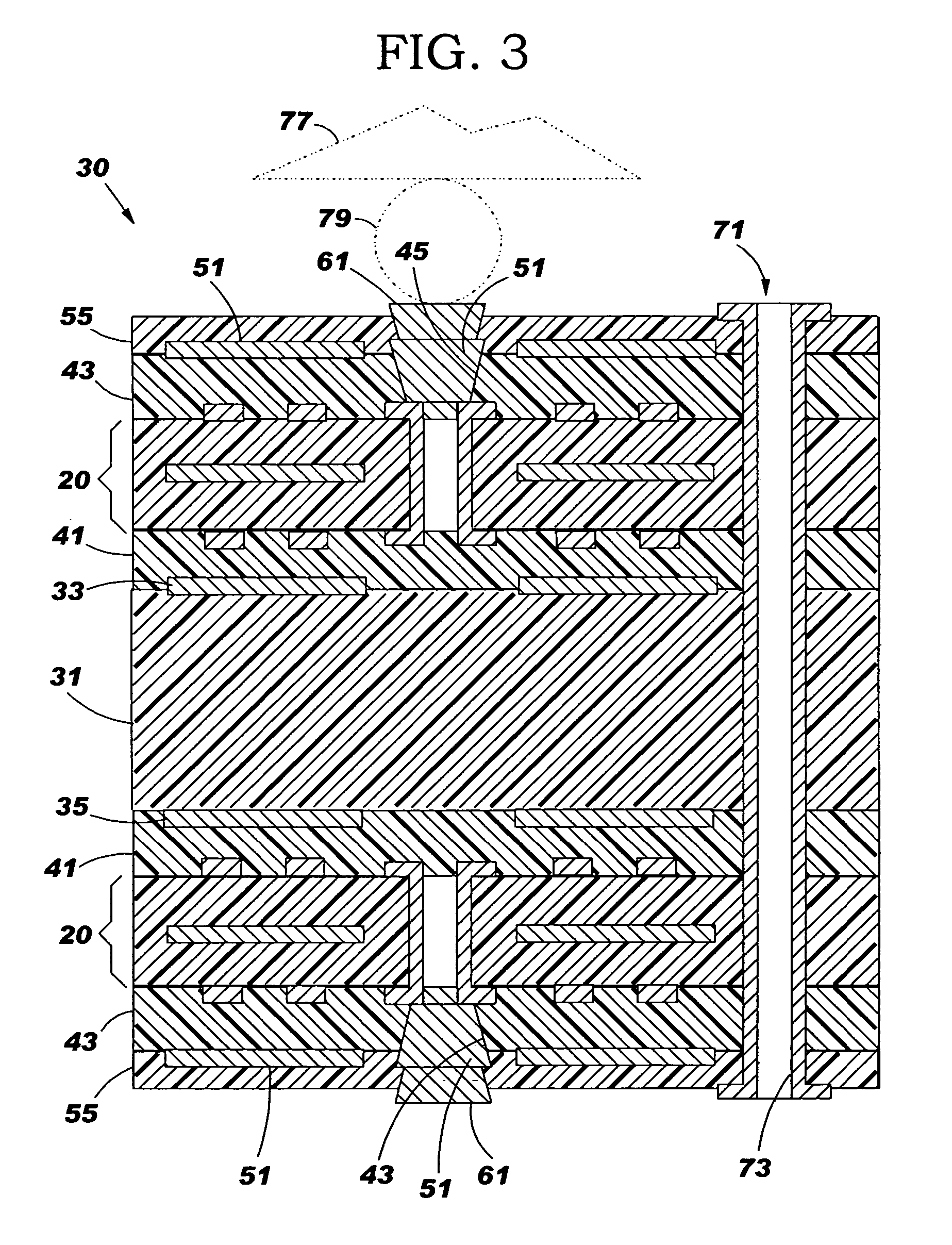High speed circuitized substrate with reduced thru-hole stub, method for fabrication and information handling system utilizing same
a technology of circuitized substrates and throughholes, applied in the direction of high frequency circuit adaptations, line-transmission details, conductive pattern formation, etc., can solve the problems of low signal densities, low signal densities, and low performance of high-speed substrates such as those used for known chip carriers and multi-layered pcbs. to achieve the effect of eliminating signal loss, eliminating signal loss, and eliminating signal loss
- Summary
- Abstract
- Description
- Claims
- Application Information
AI Technical Summary
Benefits of technology
Problems solved by technology
Method used
Image
Examples
Embodiment Construction
[0042]For a better understanding of the present invention, together with other and further objects, advantages and capabilities thereof, reference is made to the following disclosure and appended claims in connection with the above-described drawings. It is understood that like numerals will be used to indicate like elements from FIG. to FIG.
[0043]As stated above, the term“high speed” as used herein is meant signals of high frequency. Examples of such signal frequencies attainable for the circuitized substrates defined herein and as produced using the methods taught herein include those within the range of from about 3.0 to about 10.0 gigabits per second (Gb / s). These examples are not meant to limit this invention, however, because frequencies outside this range, including those higher, are attainable. As further understood from the following, the circuitized products produced herein may be formed of at least two separate layered portions which have themselves been formed prior to b...
PUM
| Property | Measurement | Unit |
|---|---|---|
| impedance | aaaaa | aaaaa |
| thick | aaaaa | aaaaa |
| thick | aaaaa | aaaaa |
Abstract
Description
Claims
Application Information
 Login to View More
Login to View More - R&D
- Intellectual Property
- Life Sciences
- Materials
- Tech Scout
- Unparalleled Data Quality
- Higher Quality Content
- 60% Fewer Hallucinations
Browse by: Latest US Patents, China's latest patents, Technical Efficacy Thesaurus, Application Domain, Technology Topic, Popular Technical Reports.
© 2025 PatSnap. All rights reserved.Legal|Privacy policy|Modern Slavery Act Transparency Statement|Sitemap|About US| Contact US: help@patsnap.com



